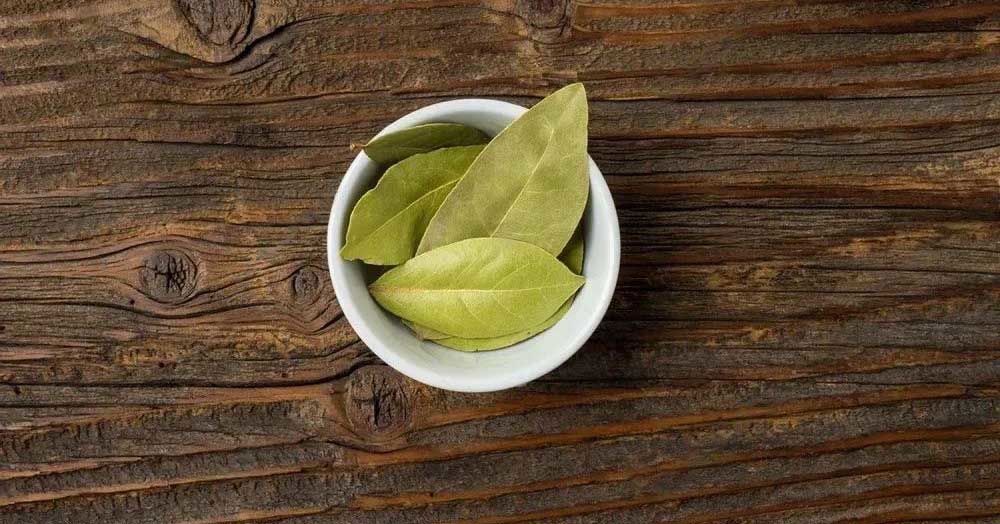Aside from dragons and pandas, the lotus is perhaps one of the most recognizable symbols of Chinese culture. Everywhere you look, they can be seen adorning landscape paintings, carved on candlesticks, engraved on moon cakes, and decorating household utensils such as dishes and temples. Its beauty has inspired many generations of artists and artisans alike. Lotus flowers have held significant meaning in Chinese culture for thousands of years. As such, it’s no surprise that these sacred symbols served an important function in ancient China and continue to hold an intricate role today – particularly amongst those who practice Buddhism faiths. In this blog post, we’ll explore the deep-rooted history of lotus flowers within Chinese culture, and what their presence signifies from ancient times through present-day society.
1. Lotus flower originated in China
According to research, it was once believed by many scholars and experts prior to the 1970s that the lotus flower originated in India; however, this is now known to be incorrect. Paleontologist Professor Xu Ren uncovered lotus fossils in the Qaidam basin more than 40 years ago which date back at least 10 million years. In 1973, Chinese archaeologists excavated the Neolithic "Hemudu Culture" site in Luojiang Village, Yuyao County, Zhejiang Province. They discovered pollen belts of aquatic plants dating back to 7000 years ago, including pollen fossils of cattail, lotus, and water chestnuts.
In 1973, archaeologists unearthed two carbonized lotus seeds at the Yangshao Culture site in Zhengzhou City, Henan Province, which are believed to be approximately 5,000 years old. In 1987, further investigations revealed carbonized lotus seeds from an ancient tomb associated with Yin Shang in Shimen County, Hunan Province, dating back around 3,500 years ago. Today, there are still large areas of "living lotus" in Fujian, and Heilongjiang, as well as the marshes on both sides of the Lianhua River in Tongjiang and the Crescent Pao swamp in Hulin. In these swamps that have been around for 1,000 years, there are also ancient lotus trees.
The discovery of excavated fossils and archaeological evidence has proved that China is the origin of the lotus. Archaeological samples, literature, cultural relics, and other data show that from the Neolithic period to the Qin and Han dynasties in China, the lotus flower became an aquatic plant that integrates decorative, edible, and medicinal uses - being welcomed and esteemed by all.
2. The meaning of the lotus flower in Chinese culture
2.1 The lotus flower symbolizes the beauty of a woman
According to legend, the lotus is an incarnation of Yuji, a beautiful palace maid who served the Empress Dowager. Initially, Yuji was very jealous of seeing two people in the world, a man farming and a woman weaving, so she and Fanxin--the daughter of the river god--escaped from Tiangong and went west to Hangzhou's West Lake. The beauty of West Lake captivated Yuji so much that she lingered there, playing recklessly until morning. When the queen's mother found out about it, she used lotuses to push Yuji into the lake with instructions to "throw her in mud so that she could never ascend south again". Ever since then, a beautiful maiden was missing in the heavenly palace, and a fresh flower with jade-like skin and freshwater bloomed in the world.
Since the Qin and Han Dynasties, lotus has been used as a symbol to represent women - particularly beautiful women - in many poems and songs. This symbolism can be traced back to very early works, such as "The Book of Songs Kiln Zhengfeng Kiln Mountain Has Fusu" and "The Book of Songs Kiln Chenfeng Kiln Zebei", which compare the lotus flower to a young and beautiful woman. A woman who lives her life full of virtue and morality is likened to that of the beautiful white lotus - simple yet captivatingly elegant.
It is said that when a woman is reborn in front of the Buddha, she will be presented with three lotuses: the red lotus representing wealth, the white lotus beauty, and the blue lotus signifying wisdom. Choosing the red lotus is like climbing a tall tree; one may attain glory and wealth but eventually, the tree will fall and all its fruits shall scatter. If one chooses the white lotus, they may receive overwhelming beauty; however, it can ultimately lead to becoming nothing more than an accessory. The blue lotus is not of this world and only those with a new outlook on life who select it will become a rare goddess amongst humankind. Jing Zhi!
2.2 The lotus symbolizes the gentleman
The lotus is the flower of the gentleman; it is both beautiful and fragrant, standing near mud yet without any trace of its smell - a symbol of purity, integrity, and honor. These qualities are what makes for an ideal Mandarin, one who should strive for such attributes. Lotus stands for Qinglian which translates to “pure”, thus making it a fitting metaphor for honest and upright officials who remain undeterred by those in the same boat as them. Even in an environment where dirt abounds, the lotus can cleanse itself whilst keeping its noble character intact - a representation of how one with manners ought to conduct themselves.
2.3 Love
Double lotus (or bing di lian), is a rare natural mutation of the lotus flower that consists of two flowers blooming on the same stem. This occurrence is so rare in nature—estimated to be only 1/10,000—that it cannot be artificially produced. In ancient times, people were unable to explain this mutation and framed its existence as a good omen from heaven. For this reason, double lotuses were often presented to kings as gifts.
In the decorative motifs of Chinese antiques, we often see images of lotus flowers and lovebirds. The lovebird is an aquatic bird with beautiful plumage, smaller than a mallard duck; male and female usually live together in the water, and even if one of them dies they won't go apart. The lotus fruit symbolizes fertility and the fullness of the house; this image implies wishing the couple peace, love and soon having a son. The image of the lotus flower also symbolizes the love between couples; there is an ancient Chinese love story that says twin lotus flowers are the reincarnation of two people who were deeply in love but could not marry because their families objected. In order to be together forever, they jumped into a lotus pond. The double lotus on one stem means “Until death do us part” and this symbolizes the unchanging love between man and woman in Chinese culture.
2.4 Friendship
In ancient China, there was a tradition of picking plums in the spring as a way of sending them off and picking lotus flowers in the autumn to show gratitude. The lotus flower has become a symbol of peace, harmony, cooperation, solidarity, and unity. It is also seen as a symbol of pure friendship between people.
2.5 The sacred flower in Buddhism
In Chinese Buddhism, the lotus is regarded as a sacred flower, symbolizing the Buddha and reflecting the bodhisattva's resilience amidst suffering in the cycle of birth and death. Amongst the eight auspicious treasures in Buddhism, Shakyamuni has given a special position to the lotus. Lotus are ubiquitous in Buddhism; from the Lotus Temple, Thai Lotus, and Lotus Eye to the Lotus House, Lotus Palace, Lotus Sect, and Lotus World. Bodhisattvas are believed to be born from lotus flowers and often adorn their heads with lotus hats, step on lotus petals, or sit atop a lotus flower. The lotus symbolizes purity, holiness, beauty, and creativity. Legends say that when Prince Siddhartha (Shakyamuni) was born, many lotuses bloomed at his feet. In addition, throughout his teachings, Shakyamuni frequently used the lotus as an analogy for moral lessons.
The growth stage of the lotus symbolizes the various stages on the path to enlightenment. A closed flower bud signifies the time preceding enlightenment, while a fully bloomed lotus stands for complete enlightenment. Occasionally, a flower is somewhat open with its core hidden, signifying that enlightenment is beyond ordinary sight. Breaking through the surface of the water in order to reach the sun, the lotus flower also represents humanity's potential for enlightenment. Just like the sun, Buddha's nature is always present and can be realized by anyone who is determined and willing to practice and conquer afflictions and ignorance.
In fact, early Buddhists valued lotus flowers based on the plant's growth characteristics. They believed that spring, summer, autumn, and winter were four seasons in rotation; flowers fell, flowers bloomed, and they bloomed in gratitude.
The flowers of the world usually bloom before they bear fruit, but the lotus flower blooms and bears fruit at the same time. Therefore, Buddhists consider the lotus to be an embodiment of the past, present, and future all at once. Buddha said equality—regardless of the past, present, and future; time and space of all things in the world—however big or small, however, people are; rich or poor—are equal. However, the lotus in Buddhism has been sublimated into a symbolic flower. Unlike the flowers of the human world which are usually no larger than a hand, the lotus in Buddhism is said to be hundreds of zhang or even thousands of times bigger. As a result, Zhu Qingzhi suggested that "the fundamental reason why Buddhism uses the lotus as a symbol is that its unique natural properties are very consistent with the core ideals of this religion." Without a lotus is lost the soul of Chinese Buddhism.
3. The meaning of the lotus flower in Chinese sculpture and architecture
The lotus flower is an important symbol in Chinese architecture and greatly influences the design of many structures. The recurring motif can be found on doorways, windows, pillars, pavements, roofs, staircases, and temples. China's Longmen and Dunhuang caves feature artistic images with the lotus as the theme. In Longmen Cave, there is a cave Northern Wei Dynasty, named "Lotus Cave" because, on the top of the cave, there is a giant lotus flower. The cave is 1.65m wide, 9.6m deep, and 6.1m high. In the middle of the cave is a standing Buddha statue 5.3 meters high, on the top of the cave is a lotus flower. In the algae well in cave 407 in Dunhuang, there are many lotus flowers in full bloom in the middle of the flying sky, and in the center of the lotus are three running white rabbits, complementing each other in motion and stillness.
Also, in temples, lotus flowers can be seen in sculptures of Buddhas and Bodhisattvas sitting on lotus pedestals or holding blue lotuses. Many images of Avalokitesvara are also shaped with lotus flowers, in one painting "Avalokitesvara riding a lotus flower floating on the water, Avalokitesvara rotating the lotus with his left hand resting on his knee.
Conclusion
The lotus flower is a meaningful symbol with much significance in Chinese culture. It is regarded as being free from dust and symbolizing purity. In Buddhism, the lotus stands for purity, holiness, and good omens; it rises from the mud without blemish to express the Buddhas and Bodhisattvas rising above the world and entering it again in a spotless, clean state. By understanding the spiritual mystery behind the lotus flower, we can find solace in its calming presence. Acknowledging its unique qualities may add an extra layer of personal enlightenment to our lives.
Related articles
Show moreSource
1. The White Lotus Teachings in Chinese Religious History - Barend ter Haar
2.Sacred lotus in religious art
https://en.wikipedia.org/wiki/Sacred_lotus_in_religious_art









